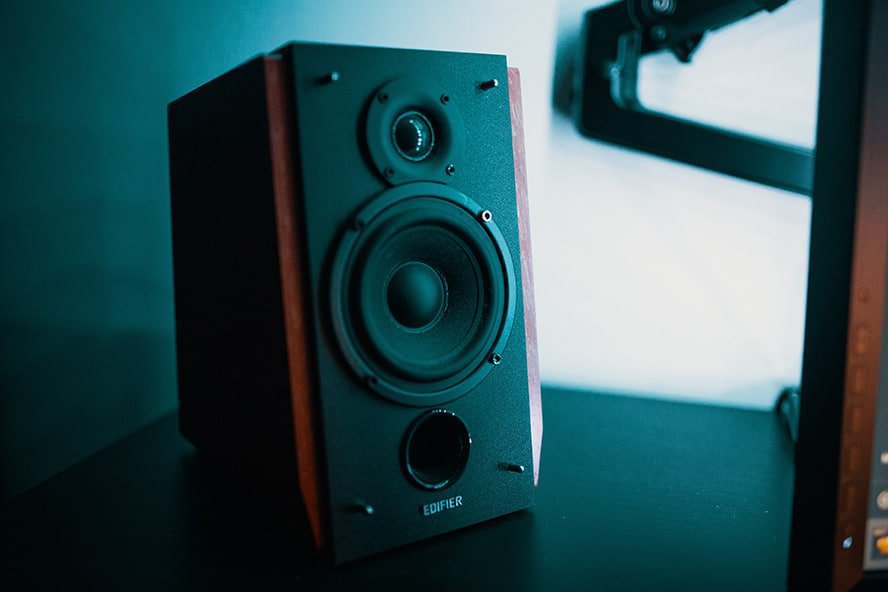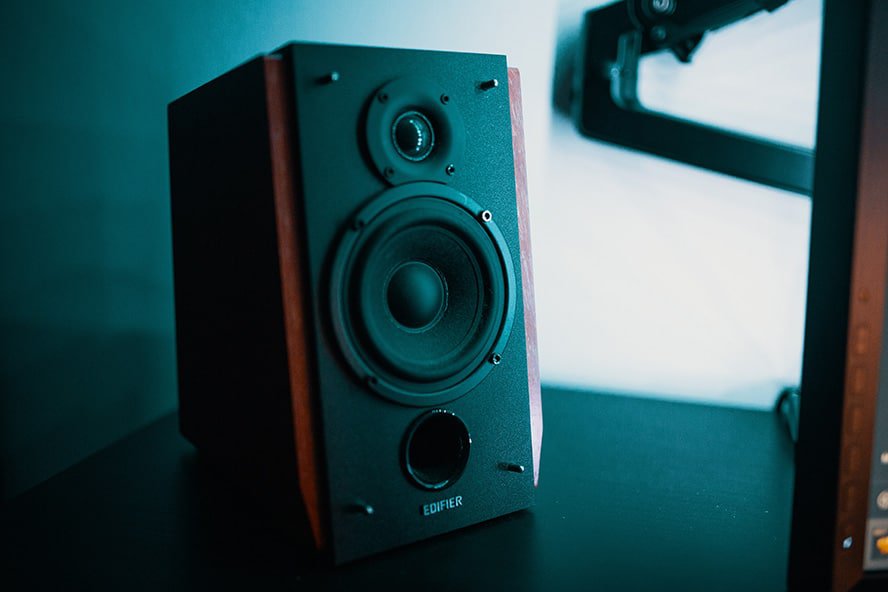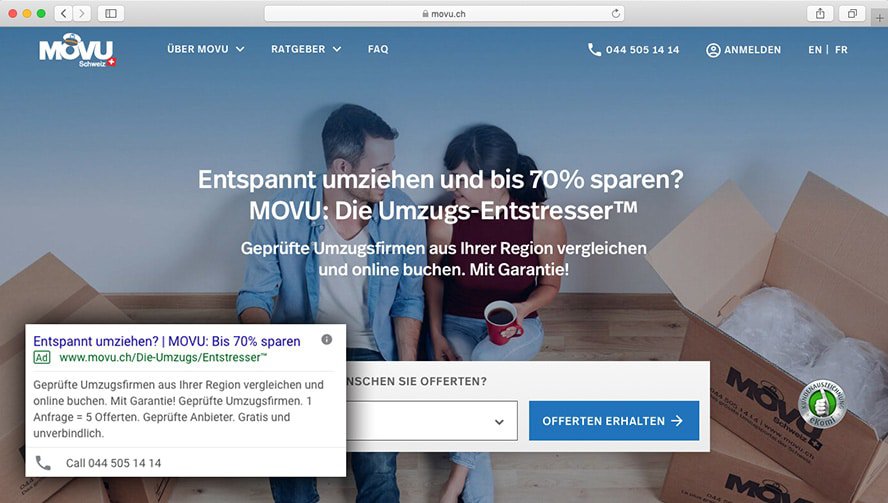
If you want your Google Search campaigns to run at their best, you have to optimize on three levels: before, within and after Google Ads. If these three levels harmonize with each other, the cash register rings.

Photo by Josh Sorenson on Unsplash
Do you regularly spend money on Google Ads and ask yourself what and where you can optimize in your campaigns so that you can get more out of them? Too often, we only deal with the adjustments within Google Ads. If we visualize the individual steps of a user up to the conversion, it becomes clear that we only orchestrate the music on one level.
Level 1: Optimization before Google Ads – research the need
First of all: If you skip this level, you will later have trouble composing irresistible ads and landing pages on levels 2 and 3.
The focus is on the user and his needs. Because: If he takes the mouse to go to Google’s search field, something happens in his head. He pursues a goal, carries questions around and looks for an answer.
Play according to the notes of the value proposition
We have to track down the intrinsic motivation of the user. To attach to her later in messaging. And to find a killer value proposition that not only maintains motivation but increases it. Because of the higher the motivation, the greater the willingness to convert. The value proposition must penetrate all facets of the messaging (ads, landing page texts, imagery, design, etc.) to develop its maximum conversion power.
The right call-to-action – good sound for the user
Call-to-action is an extension of the value proposition. What kind of action do we want, and can we ask users to do? What is the next logical step in your journey? Google Ads audiences are often invited too much. And the harmonious canon deteriorates. The right conversion contributes significantly to the success of a campaign.
A practical example: With the introduction of a new conversion alone, we were able to cut the lead costs in half for one of my customers (a provider of heating systems for private households). We replaced an extensive offer request form on the website with a simple request for free advice, including on-site analysis.
The research tools
It makes sense that we should deal with the keywords and the motives behind them pleasantly. The search term report within Google Ads often reveals something about the motivation and intentions of our users. If you’ve had campaigns running for a while, be sure to do research here too.
Other tools and sources to enrich the keywords found with additional user insights:
- Customer surveys: interview the people who decided the cost-benefit assessment in your favour. Tooltip: typeform.com
- Website Visitor Surveys: Survey the users on the website while they deal with your offer. Tooltip: hotjar.com
- Email communication: Support or sales are often in close contact with customers and users who are willing to buy.
- Interviews: either with customers directly or with sales
- Reviews: Social media, Google my business, Trustpilot etc. Important: Read over there from your competitors
Level 2: Optimization within Google Ads – direct campaigns
Now it’s time to target (keywords, audiences, etc.) and advert messaging. Today we mostly leave the bidding to the algorithm. That’s why I’m not going to go into that here. Side note: I expect that Google will gradually ban any manual adjustments from the Google Ads interface. This trend has been evident for some time.
The needs and pains are identified. We dealt with the keywords and the associated motifs. There is clarity about the value proposition. The best way to fine-tune the structure of your campaigns is to have a separate ad group or campaign for each need. This is how you align the keywords, ads and landing pages.
Text better ads – so your music can be heard
The output of Google Ads visible to the user is solely the display. It will probably take a little longer for the algorithm to support us. So reserve enough time for it. Your ads make you stand out from the rest of your competitors. Business colleague and Google Ads copywriter Aurel Gergey rightly says: “If you don’t stand out, you’ll fail.” But be careful: don’t leave the thread here and pick it up again on the landing page. More on that later. By the way: Aurel Gergey has written an e-book about optimizing Google Ads ads.
A practical example: As part of a testimonial video production for our customer «MOVU», we conducted an hour-long interview with around ten customers. We discovered the motives that motivated the testimonials to realize their move with MOVU. It quickly became clear that the move was very stressful for everyone: a step is drastic and time-consuming. There is uncertainty about how to tackle the upcoming move as stress-free as possible. A lot has to be clarified. Some distrusted the moving companies and feared unexpectedly high costs.
We decided to verbally address the topic of “stress” in the advertisements. With this, we discussed the critical point. However, we consciously turned the message into a positive: We communicated that MOVU reduces the stress associated with the move. To get the necessary attention, we used the not very common term “de-stress”. In doing so, we focused on the benefits of MOVU at the same time. In the description of the advertisement, we devoted ourselves to proving the promise. We have prepared the advertising message in the form of a mathematical equation – this simplifies reading and thus offers a taste of the promised de-stressing.
More resonance with additional audiences
Not only if your budget is limited, but it can also make sense to narrow your keyword targeting through new audiences. Can sensible viewers about your users be derived from the insights gained at level 1? Google provides us with a lot with in-market, affinity, custom affinity and custom intent audiences. If you are dealing with voluminous keywords in your campaign, it is worth considering to ensure even more resonance among your users.
Level 3: Optimization according to Google Ads – the final chord
The main thing here is that you keep your promises. And finish singing the song of your ad on your landing page. How often are we promised something in advertisements that we won’t find anywhere else on the landing page? The landing page is the place where the value proposition developed on level 1 can spread. In the headlines and subheadlines, the visual language and the design. The interest piqued in the ad and the sprayed emotions should be stimulated further, and the user should be asked to take action.
A practical example: For our customer «MOVU», we identified the conversion with the highest conversion based on the historical data in Google Ads. We looked at messaging and copied the content more or less 1 to 1 onto the landing page – into the headline and subheadline. And lo and behold: We recorded an uplift in the double-digit percentage range with the conversion rate. And this with the conversion located further back in the funnel and relevant for us.

A case study from MOVU: The headline and subheadline on the landing page are almost identical in content to the Google Ads ad. An example of the interlocking of levels 2 and 3.
Provide speed with separate intent landing pages
With SEA traffic, we are lucky that users are usually very focused. If you have identified different needs and intentions at level 1 that are expressed in different keyword clusters, you should think about dedicated intent landing pages. In this way, you can increase the relevance of your landing page, increase the pace and guide the user to their destination faster. You have prepared the campaign structure required for this on level 2.
Conclusion
If you want to increase ROAS (Return on Ad Spend) with Google Ads, you can’t avoid making music on all three levels. And if you manage to bring the three levels together into a musical ensemble: Then you are doing not only a favour for your users, but also your wallet. Whoever optimizes holistically wins.
